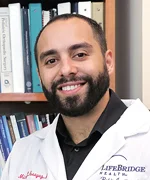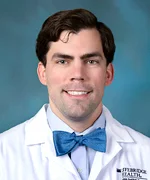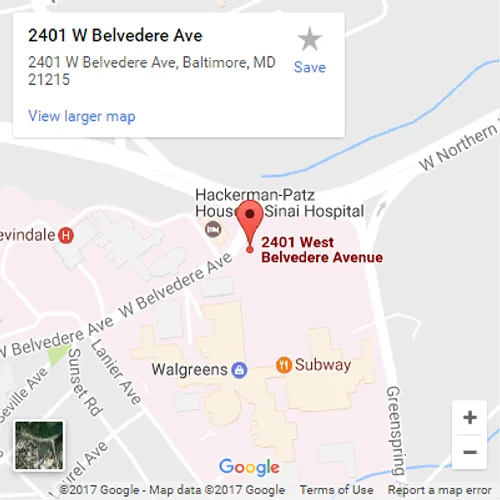Multiple Hereditary Exostoses (MHE)
What is multiple hereditary exostoses (MHE)?
Multiple Hereditary Exostoses (MHE) is a rare bone disease where benign (non-cancerous) bony tumors called osteochondromas grow outward from the growth plates of the long bones (e.g., femur (thigh bone), tibia (shin bone), humerus (upper arm bone), radius/ulna (lower arm bones). The disease is also known as Multiple Osteochondromatosis, Multiple Exostosis Syndrome and Multiple Cartilaginous Exostosis. The disease is estimated to affect one in every 50,000 children.
With MHE, there is a failure to suppress cells called chondrocytes that produce new cartilage and bone near the growth plates of the long bones. Growth plates are responsible for bone growth in children. Growth plates are a thin layer of cartilage (1/10 of an inch, ~3 mm) that is embedded in the ends of the bone. They are located near each end of the humerus, radius/ulna, femur and tibia. Sometimes MHE affects other bones as well (e.g., ribs, spine).
MHE is an autosomal dominant condition, which means that if a person has inherited the abnormal gene from either parent, he/she will develop the disease. Typically, one of the parents also has the disease. Two genes are strongly associated with multiple hereditary exostoses: EXT1 and EXT2. However, in many cases, there is no genetic component identified and both parents are not affected by the disease.
What are the symptoms of multiple hereditary exostoses?
Patients with multiple hereditary exostoses have multiple bumps (exostoses) growing on their bones near their joints (shoulder, elbow, wrist, knee, ankle, hip), vertebra, and/or pelvis. These non-cancerous bumps are mostly made of bone with a “cap” of growing cartilage. The exostoses tend to grow throughout childhood and are connected to the underlying bone.
MHE is typically diagnosed during the first year of life because the bumps in the tibia (shin bone) or scapula (shoulder bone) are easily visible or felt in these locations. The size and number of bumps can vary in each person with MHE. The exostoses stop growing when a child reaches skeletal maturity (15 to 18 years old).
Most exostoses are painless bumps that are felt under the skin and do not cause any symptoms. Some patients may have cosmetic concerns about the exostoses. If a patient experiences pain, it can be caused by local trauma, such as a tendon rubbing over the exostoses and causing tendonitis. Sometimes the exostoses can restrict joint motion. The most common problems that arise from the disease are short stature, limb length discrepancy, knock knees, and valgus ankle (causes the foot to be angled outward away from the body).
Exostoses in certain parts of the body can cause nerve compression (e.g., exostoses in the armpit area of the shoulder, exostoses on the fibula can cause peroneal nerve compression in the lower leg). They can compress blood vessels, which can damage the vessels or cause pseudoaneurysm. The blood vessels behind the knee can be affected by exostoses near the knee. They rarely grow in the spine, but if they do, they can apply damaging pressure on the spinal cord or spinal nerves.
Can the exostoses become malignant?
Adults with MHE have a 5% to 10% risk of malignant (cancerous) transformation of the exostosis into a chondrosarcoma. This occurs when a previously benign (non-cancerous) exostosis begins to grow in adults. Exostoses near the shoulder and pelvis are more likely to undergo malignant transformation than those in the limbs. New pain and increasing size of a previously noted exostosis are signs of malignancy. Fortunately, such chondrosarcomas can be treated by surgical removal (excision) and no chemotherapy or radiation is needed.
How does MHE affect the arms?
Forty to seventy percent of patients develop a deformity in the lower arm bones (radius and ulna bones) with limitation of lower arm mobility, ulna shortening, bowing radius, wrist deviation and dislocation of the head of the radius at the elbow.
What are the treatment options when MHE affects the arms?
Treatment options include:
- Surgical removal (excision) of the exostosis
- Ulnar lengthening and straightening with an external fixator
- Osteotomy of the radius to straighten a crooked wrist: the radius bone is cut and a metal plate is placed to hold the bone in the corrected position
- Stunting the growth plate of the radius by inserting a screw or small plate.
How does MHE affect the legs?
Limb length discrepancy is commonly seen patients with this disease. Ten to fifty percent of patients have been reported to have a leg length discrepancy of 2 cm (0.8 in) or more. The femur is affected twice as often as the tibia. The femur and tibia are involved in about 80% of patients and the fibula in about 60% of patients. Patients may develop knock knees. Exostoses near the ankle can affect growth, causing pain, decreased joint movement and angular deviation; up to 50% of patients can be affected with ankle issues. About 50% of individuals with the MHE have lesions of the upper femur, which can limit hip motion and even cause partial dislocation of the hip joint.
What are the treatment options when MHE affects the legs?
Growth plate fusion (epiphysiodesis) can help equalize limb length discrepancy by stopping growth in the longer leg.
Knock knees can be treated by:
- Guided growth (hemiepiphysiodesis) using an eight-Plate
- Bone lengthening and angular correction with an external fixator
Ankle issues can be treated by:
- Guided growth (hemiepiphysiodesis) using an eight-Plate or screw (outpatient surgery)
- Osteotomy (bone cut) to reconstruct the ankle
- Surgical removal of the exostoses
Femoral (thigh bone) issues can be treated by:
- Femoral osteotomy (bone cut) with plate and screws to hold the correction in place
- Removing the exostoses from the neck of the femur (part of the thigh bone that is close to the hip). This requires a special procedure called a surgical dislocation of the hip, which is commonly done at the International Center for Limb Lengthening, but is rarely done elsewhere.
Why choose the International Center for Limb Lengthening for treatment of multiple hereditary exostoses?
Limb lengthening and deformity correction are complex processes. Your doctor at the International Center for Limb Lengthening will take the time to make sure you understand all of your options and then will customize your treatment to meet your specific needs. Our patients benefit from our team-centered approach with world-renowned surgeons and specialized physician assistants, nurses and physical therapists. We help patients with multiple hereditary exostoses achieve their best possible result.


